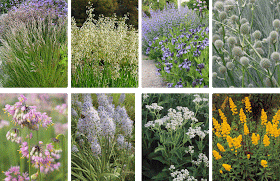Native plants have a particular allure for me. Perhaps they evoke memories of my childhood. I remember drawing Tolkien-esque maps of the forest that bordered our suburban home in the Alabama Piedmont. The thicket of Sparkleberry trees (Vaccineum arboreum) I drew to look like Mirkwood Forest; I sketched the huge Southern Red Oak—the meeting spot for my neighborhood friends—to look like one of the mythic trees of Fanghorn. And while I romped through these woods with a pack of irreverent boys, we all had a certain reverence for a cluster of Beech trees that resided at the intersection of two streams. When the winter sun backlit those copper leaves, that golden grove became our Lothlorien.
But the allure of natives is stronger than just memory; in them, I feel a more primal pull. For me, there is something very powerful about that attraction—something even ancient. I want to articulate why native plants have this appeal and how this can be used to create bolder, more emotionally-rich gardens and landscapes.
 |
| illustration by Alfred Parsons for The Wild Garden |
To understand designing with native plants, you have to understand the garden itself. Designed landscapes and gardens are manipulated fantasies. They are our mental projections, our ideas, and our desires projected onto a piece of land. And gardens and landscapes don’t really live apart from us. Ultimately, without our input and continued maintenance, they would cease to be. That gardens are fantasies does not undermine their value; on the contrary, this very fact is what makes them art. If all gardens are fantasies, then native and naturalistic gardens are a particular kind of fantasy.


